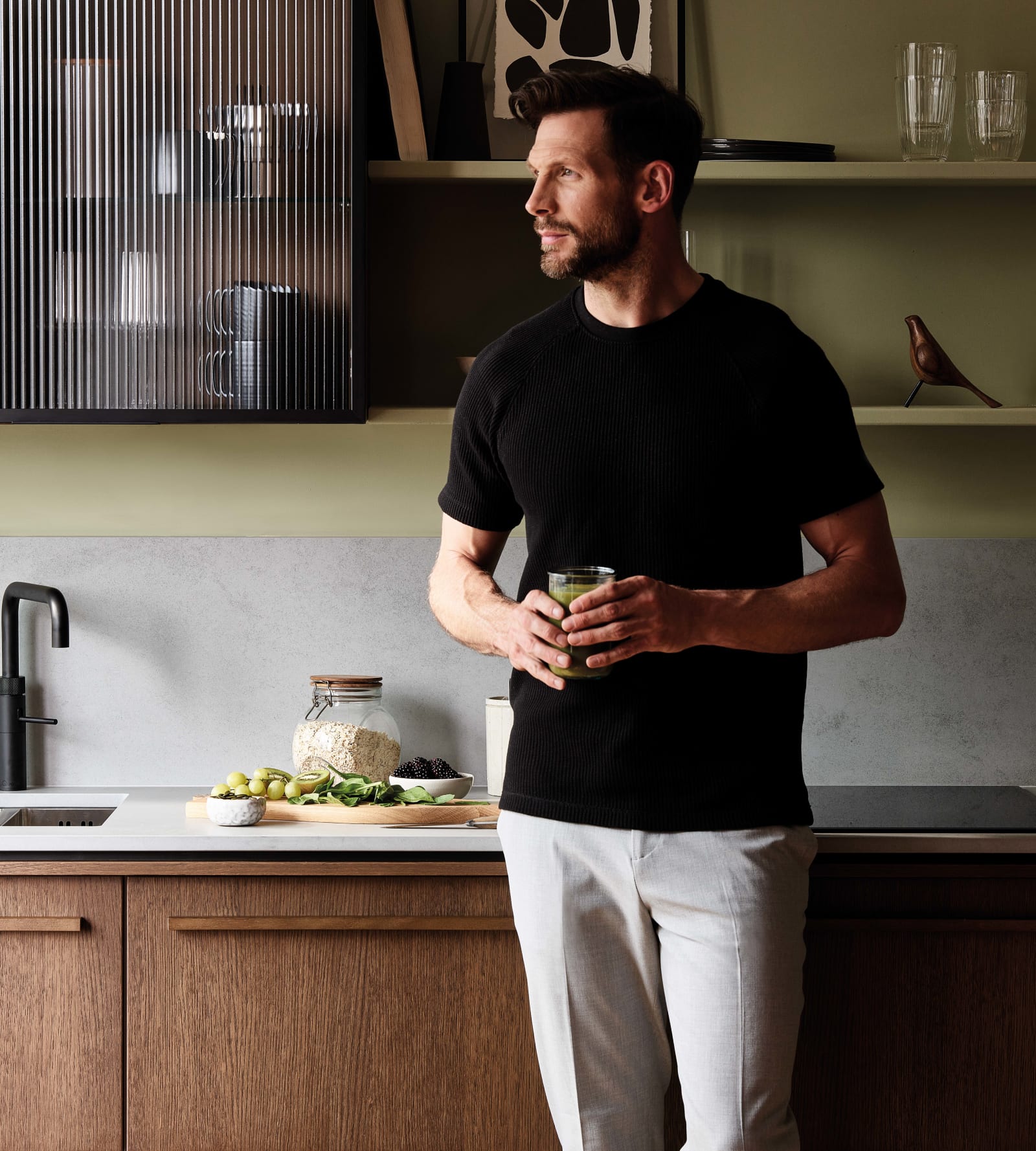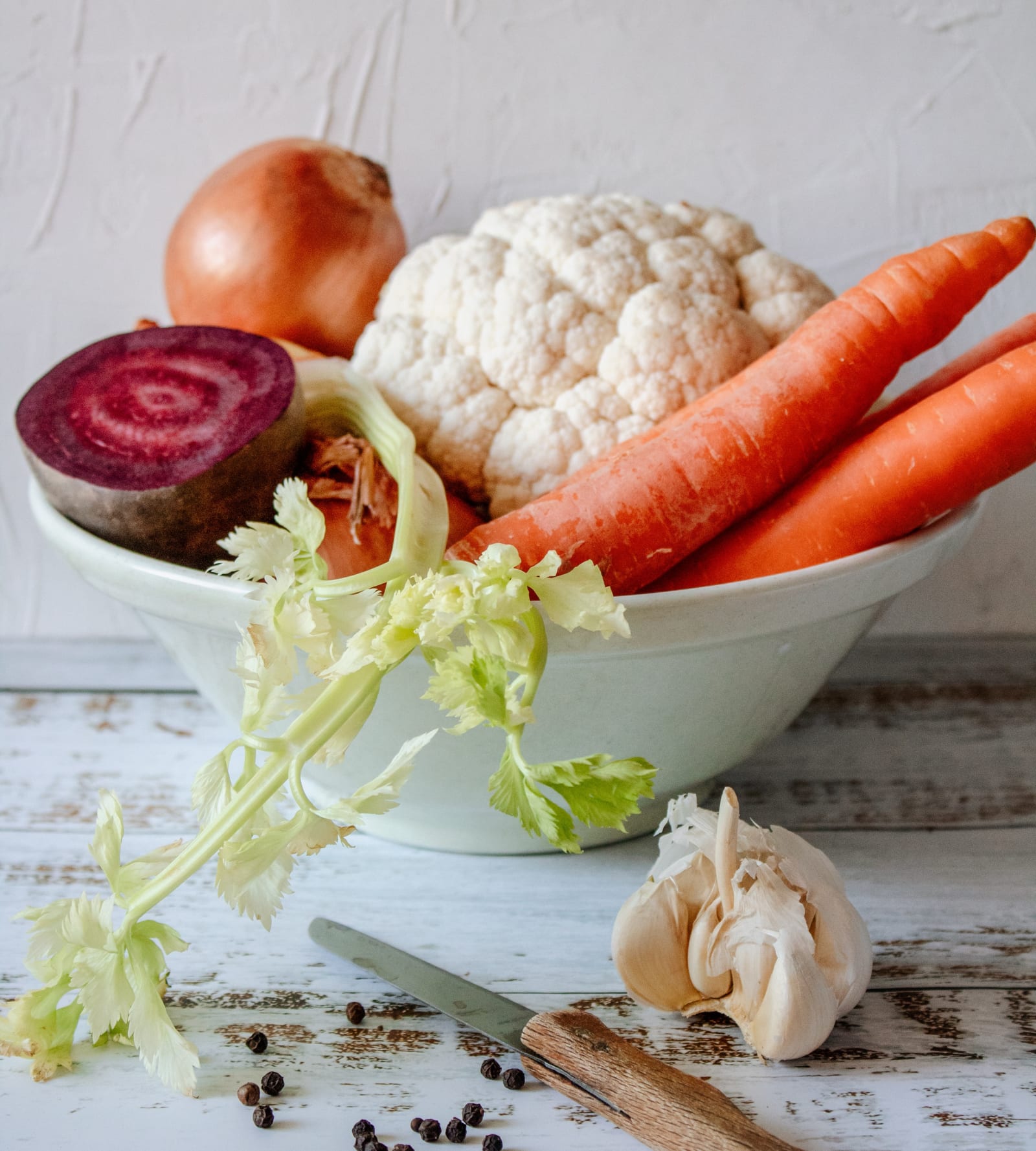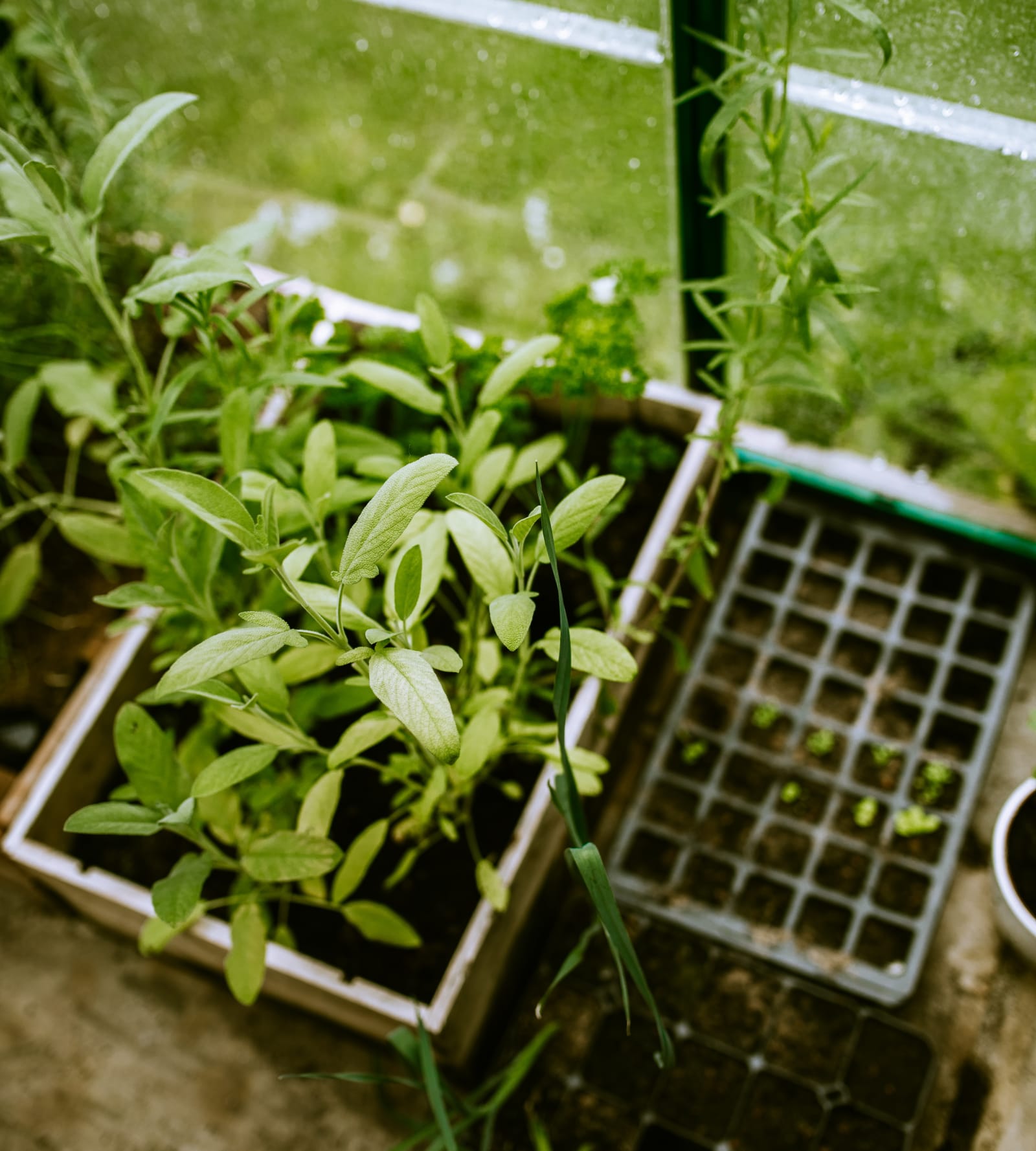How to plant your own kitchen garden
Everything you need to know in order to grow your own delicious seasonal fruit and veg in your own back garden – helping you form a healthier diet, spend more time outdoors and live more sustainably.


How to plant your own kitchen garden kitchen
As a new year dawns, many of us choose to commit to a healthier lifestyle.
This year, as climate change becomes an increasingly vital issue, there is an extra emphasis on sustainability whilst we try to reach these wellness goals.
Sustainable trends like Veganuary are also picking up in popularity in recent years so here at Magnet we’ve put together a guide to help you grow your own fresh and delicious veg - all from the comfort of your own home.
Searches for ‘how to grow your own veg all year round’ have increased by 80% since this time last year.
Growing awareness around the importance of sustainability, saving money and removing pesticides from our food and environment has driven more demand to high quality, as-fresh-as-possible produce - and what better way to achieve this than growing it yourself?
Unsure of where to start? Don’t worry. This guide will give you all the information you need to get growing.
Kitchen gardens are a great way to have all your fresh ingredients on your doorstep - and they’re easier to create than you might think, especially if you’re short on space.
Here, we’ll take you through how to plan and create your garden, whilst giving you seasonal advice on what to grow and when.
We’ve also delved into the data to reveal the UK cities with the best conditions for growing your own fruits, vegetables and herbs.
So, start noting down some of those delicious Veganuary recipes from social media, you’ll be able to cook them up in no time!


What is a kitchen garden?
A kitchen garden is a space dedicated specifically to growing plants for eating, including vegetables, fruits and herbs. If done right, this small garden area can provide you with delicious, fresh seasonal produce all year round.
For some inspiration, The National Trust and Kew Gardens are two great examples of establishments that are well known for their luxurious kitchen gardens.
Ideally, the garden should be located near to your kitchen (hence the name) to make it as easy as possible to grab your ingredients when preparing a gorgeous home-grown meal.
Not all homes have a large garden space, or any garden space at all, but you can make just as effective a garden using allotments, makeshift containers or balcony space.
The benefits of a kitchen garden
There are so many benefits to growing your own produce.
Fresh fruit and vegetables from your own garden will be packed full of nutrients and flavour - and will have none of those pesky pesticides used in large-scale farming.
Households that grow their own fruit and veg also consume 40% more greens per day than those that don’t, so not only will your food have incredible flavour, but you’ll have a healthier diet for it.
Keeping a kitchen garden also encourages you to spend more time outdoors tending to it. This could lead to a more active lifestyle, more vitamin D and an increase in mindfulness as you spend time tending to your crops.


Growing your own food will also save you money in the long run, giving you an unlimited supply of healthy and flavourful food.
For example, you could grow 1kg of baby carrots for 25p, whereas this same quantity would cost you over £3 in a supermarket[1].
In fact, the National Society of Allotment and Leisure Gardens found that those that grow their own produce spend an average of £202 on growing fruit and veg each year that would otherwise sell for £1,564 in shops[2].
The most cost-effective vegetables to grow include courgettes, aubergines and brussel sprouts, so if saving the most money is your priority, it’s well worth looking into these.
The best UK cities for growing your own produce
As part of this guide, we’ve also done some digging into the top 20 UK cities with the biggest advantages when it comes to growing your kitchen garden.
Our index analysed over 60 UK towns and cities by taking into consideration the average garden size, number of allotment sites, soil fertility and air quality.
If your city doesn’t make the cut, though, this doesn’t mean you can’t take part in kitchen gardening. It just might take a bit more improvisation and research - but we think it’s worth it.
Two southeast cities have the perfect conditions for home-grown produce
Crawley and Oxford come out on top according to our data. These cities offer large gardens, a good amount of allotment sites and not too many days a year of poor air quality.
Crawley has great soil fertility, scoring a 4 out of 5, and scored a total of 87 out of 100 in our kitchen garden index, landing it in first place.
Oxford isn’t too far behind with 76 out of 100, losing out when it comes to soil fertility (it scored 3 out of 5 for this), but the city would still be a great one to begin your kitchen garden venture in.
Yorkshire and The Humber is the home of two of the top three best cities for kitchen gardens
Wakefield and York are next in line. Both cities have great conditions for kitchen gardens, especially when it comes to air quality.
The average garden size in Wakefield is generous, less so in York, but the latter has far more allotment sites around the city that could be used instead.
York’s soil fertility score is great, with 4 out of 5, so having to venture to an allotment might be worth the extra steps for the bounty you’d be able to grow there. Wakefield’s soil scored 3 out of 5, but the other positives of the city mean its overall index score was 75 out of 100, compared to York’s 71.
It’s not the easiest to grow fruit and veg in Preston, London and Burnley
If you live in Preston, London or Burnley, it might prove more difficult to grow your own fresh fruit and veg.
These cities scored the lowest in our index out of the 60 locations, Burnley bringing up the rear with a score of 14 out of 100. The soil fertility score of these cities is a mere 2 out of 5, and the average garden size isn’t very large.
London, however, has a huge 737 allotment sites around the city, so there’s still plenty of opportunity for gardening even if you don’t have your own space. On the downside, London also has the highest number of poor air quality days a year with 47.
Gardening is certainly still possible in these cities, but it might take a bit more work to get started.
How to build your own kitchen garden
Even though some cities have a natural advantage over others when it comes to gardening conditions, anyone can build their own kitchen garden with a little bit of work.
First, decide where your garden will be. Do you have an outdoor space that’s calling for some greenery? An empty container that is perfectly carrot plant-sized? Or a balcony that has just enough space for a line of sweet peas?
Kitchen gardens can be any size, so there’s tons of flexibility when the time comes to build it. Decide on your space and then fill it with nutrient rich, fertile soil.
There’s plenty of garden inspiration online to decide what to plant and where, so choose the plants you want to grow and buy the seeds. Once they’re planted, just water them daily and wait - you’ll have a beautiful garden of delicious produce before you know it.


A guide to seasonal planting
Planting your own garden doesn’t have to mean eating the same fruit and veg over and over again. You can grow a wealth of different produce, switching it up between seasons to make sure you’re always excited to dive into your harvest. To know the types of plant to grow and when here’s a quick guide to the produce that thrives in the different seasons:
What to plant in spring (March-June)
- Garlic
- Cucumber
- Tomatoes
- Peppers
- Radish
What to plant in summer (June-September)
- French beans
- Runner beans
- Cabbage
- Carrots
- Lettuce
What to plant in autumn (September-December)
- Beetroot
- Marrow
- Courgette
- Squash
- Peas
What to plant in winter (December-March)
- Broad beans
- Sprouting broccoli
- Brussel sprouts
- Leeks
- Parsnips


Five top tips for planting a great kitchen garden
There are a few things to bear in mind when preparing and nourishing your kitchen garden. Here are five top tips that you can implement to make sure your garden thrives.
Divide your garden into different sections
Keep your different plants separated so you can easily keep track of what’s what, and manage the crops better. This way, when the carrots (for example) are ready for picking, you can go in and grab them all without disturbing the peppers (for example, again).
Choose a spot with lots of direct sun
Fruit and veg plants need sun - and lots of it. Ideally, you want your garden to be getting around eight hours of sunlight a day.
If you don’t have a sunny spot to put your garden in, you can grow leafy crops and herbs effectively in shady areas. Just make sure you give your desired product the light it needs.
Keep it small
If this is your first kitchen garden, don’t overwhelm yourself by growing too much to begin with. Start out with a smaller garden than you think you need so you can get used to the routine of caring for your plants.
That way, every time you add a new one to the mix, you’ve mastered the skill for the others already - so there’s less to learn at once.
Choose insect friendly plants
Bees, butterflies, ladybirds and more are your friends when it comes to gardening. They will pollinate your fruit and veg, helping them grow into delicious food.
To attract these critters to your garden, try putting insect-friendly plants in between your different fruits and veggies. Sunflowers, cosmos and zinnias are a great place to start here.
Test your soil
As well as light and water, good soil can make or break your gardening efforts. Before you get to planting, test the PH and fertility of your soil using a soil test (easily available at most garden centres or online).
Once you know this information, you can buy the correct fertilisers to adjust the levels if needed and create the most fertile ground for your plants to grow in.

Methodology
To discover the best UK cities to grow your own produce, Magnet created an index that ranked and scored over 60 UK cities on four influential growing characteristics. These included:
-
ONS data on the average garden size of a city centre property
-
The soil fertility score of each city from Cranfield soil and Agrifood Institute Soilscapes
-
The number of listed local council allotment sites in each city relative to the population size
-
The number of days a year with poor air quality from the Center for Cities
Please note Blackpool, Stoke, and Scottish cities were removed from the results due to inconclusive data points.
Sources
[1] “Save money by growing your own veg” (Ceri Thomas for Which?, 2021)
[2] "Grow your own food and chop £1,300 from the grocery bill" (Toby Walne for The Mail on Sunday, 2011)



























